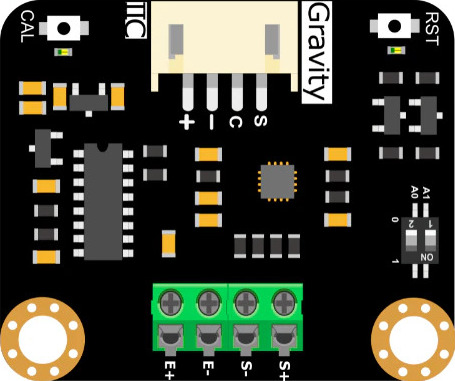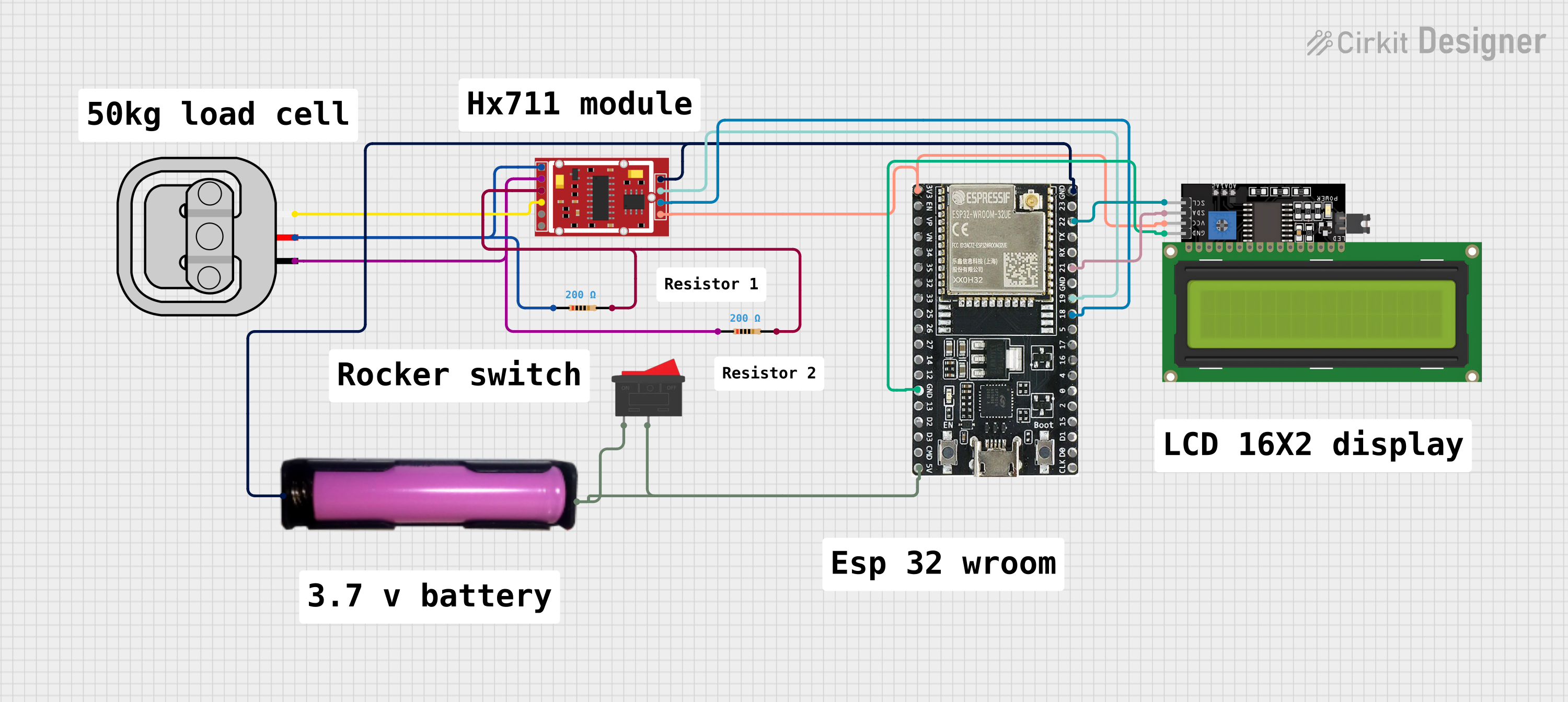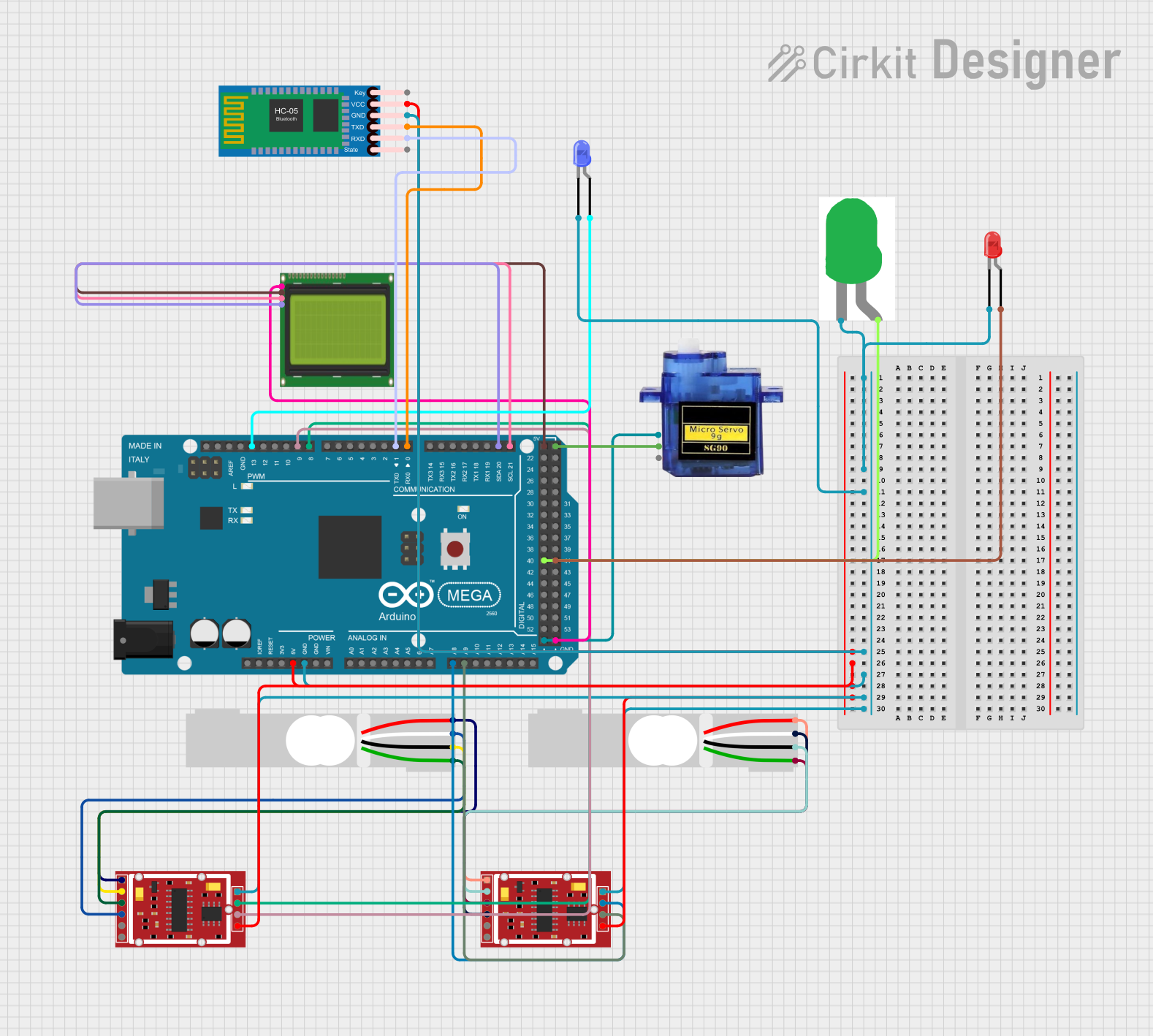
How to Use Gravity I2C Weight Sensor Module: Examples, Pinouts, and Specs

 Design with Gravity I2C Weight Sensor Module in Cirkit Designer
Design with Gravity I2C Weight Sensor Module in Cirkit DesignerIntroduction
The Gravity I2C Weight Sensor Module by DFRobot is a digital weight sensor designed for precise weight measurement. It utilizes I2C communication for seamless integration with microcontrollers, making it an excellent choice for applications requiring accurate and reliable weight data. This module is commonly used in projects such as digital scales, load monitoring systems, and industrial automation.
With its compact design and user-friendly interface, the Gravity I2C Weight Sensor Module is ideal for both beginners and experienced developers looking to implement weight-sensing capabilities in their projects.
Explore Projects Built with Gravity I2C Weight Sensor Module

 Open Project in Cirkit Designer
Open Project in Cirkit Designer
 Open Project in Cirkit Designer
Open Project in Cirkit Designer
 Open Project in Cirkit Designer
Open Project in Cirkit Designer
 Open Project in Cirkit Designer
Open Project in Cirkit DesignerExplore Projects Built with Gravity I2C Weight Sensor Module

 Open Project in Cirkit Designer
Open Project in Cirkit Designer
 Open Project in Cirkit Designer
Open Project in Cirkit Designer
 Open Project in Cirkit Designer
Open Project in Cirkit Designer
 Open Project in Cirkit Designer
Open Project in Cirkit DesignerTechnical Specifications
- Manufacturer: DFRobot
- Model: Gravity I2C Weight Sensor Module
- Communication Protocol: I2C
- Operating Voltage: 3.3V to 5V
- Operating Current: ≤ 20mA
- Measurement Range: 0 to 5kg (with included load cell)
- Resolution: 24-bit ADC for high precision
- I2C Address: Default 0x64 (modifiable)
- Dimensions: 32mm x 27mm
Pin Configuration and Descriptions
The module has a 4-pin interface for I2C communication and power supply. Below is the pinout:
| Pin | Label | Description |
|---|---|---|
| 1 | VCC | Power supply (3.3V to 5V) |
| 2 | GND | Ground |
| 3 | SDA | I2C data line |
| 4 | SCL | I2C clock line |
Usage Instructions
Connecting the Module
- Power Supply: Connect the
VCCpin to a 3.3V or 5V power source and theGNDpin to ground. - I2C Communication: Connect the
SDAandSCLpins to the corresponding I2C pins on your microcontroller. For an Arduino UNO:SDAconnects to A4.SCLconnects to A5.
- Load Cell Connection: Attach the included load cell to the module's dedicated connector.
Arduino UNO Example Code
Below is an example code to interface the Gravity I2C Weight Sensor Module with an Arduino UNO:
#include <Wire.h>
// I2C address of the Gravity I2C Weight Sensor Module
#define WEIGHT_SENSOR_ADDR 0x64
void setup() {
Wire.begin(); // Initialize I2C communication
Serial.begin(9600); // Start serial communication for debugging
// Initialize the weight sensor
Serial.println("Initializing Weight Sensor...");
Wire.beginTransmission(WEIGHT_SENSOR_ADDR);
if (Wire.endTransmission() == 0) {
Serial.println("Weight Sensor Initialized Successfully!");
} else {
Serial.println("Failed to Initialize Weight Sensor. Check Connections.");
}
}
void loop() {
// Request weight data from the sensor
Wire.beginTransmission(WEIGHT_SENSOR_ADDR);
Wire.write(0x01); // Command to request weight data
Wire.endTransmission();
// Read the weight data
Wire.requestFrom(WEIGHT_SENSOR_ADDR, 4); // Request 4 bytes of data
if (Wire.available() == 4) {
long weight = 0;
for (int i = 0; i < 4; i++) {
weight = (weight << 8) | Wire.read(); // Combine bytes into a 32-bit value
}
Serial.print("Weight: ");
Serial.print(weight);
Serial.println(" g"); // Display weight in grams
} else {
Serial.println("Error: No data received from sensor.");
}
delay(1000); // Wait 1 second before the next reading
}
Important Considerations
- Ensure the load cell is securely mounted and not subject to vibrations or external forces that could affect accuracy.
- Calibrate the sensor before use to ensure precise measurements. Refer to the DFRobot documentation for calibration instructions.
- Avoid exceeding the maximum weight limit of 5kg to prevent damage to the load cell.
Troubleshooting and FAQs
Common Issues
No Data Received from the Sensor
- Cause: Incorrect I2C wiring or address mismatch.
- Solution: Verify the
SDAandSCLconnections. Ensure the I2C address in the code matches the module's address (default is 0x64).
Inaccurate Weight Readings
- Cause: Improper calibration or unstable load cell mounting.
- Solution: Recalibrate the sensor and ensure the load cell is securely mounted on a stable surface.
Module Not Initializing
- Cause: Insufficient power supply or damaged module.
- Solution: Check the power supply voltage (3.3V to 5V). If the issue persists, test with another module.
FAQs
Can I use this module with a 3.3V microcontroller?
Yes, the module supports both 3.3V and 5V logic levels.How do I change the I2C address?
Refer to the DFRobot documentation for instructions on modifying the I2C address using the onboard jumpers.What is the maximum cable length for the load cell?
For optimal performance, keep the load cell cable length under 1 meter to minimize signal degradation.
By following this documentation, you can effectively integrate the Gravity I2C Weight Sensor Module into your projects and achieve accurate weight measurements.